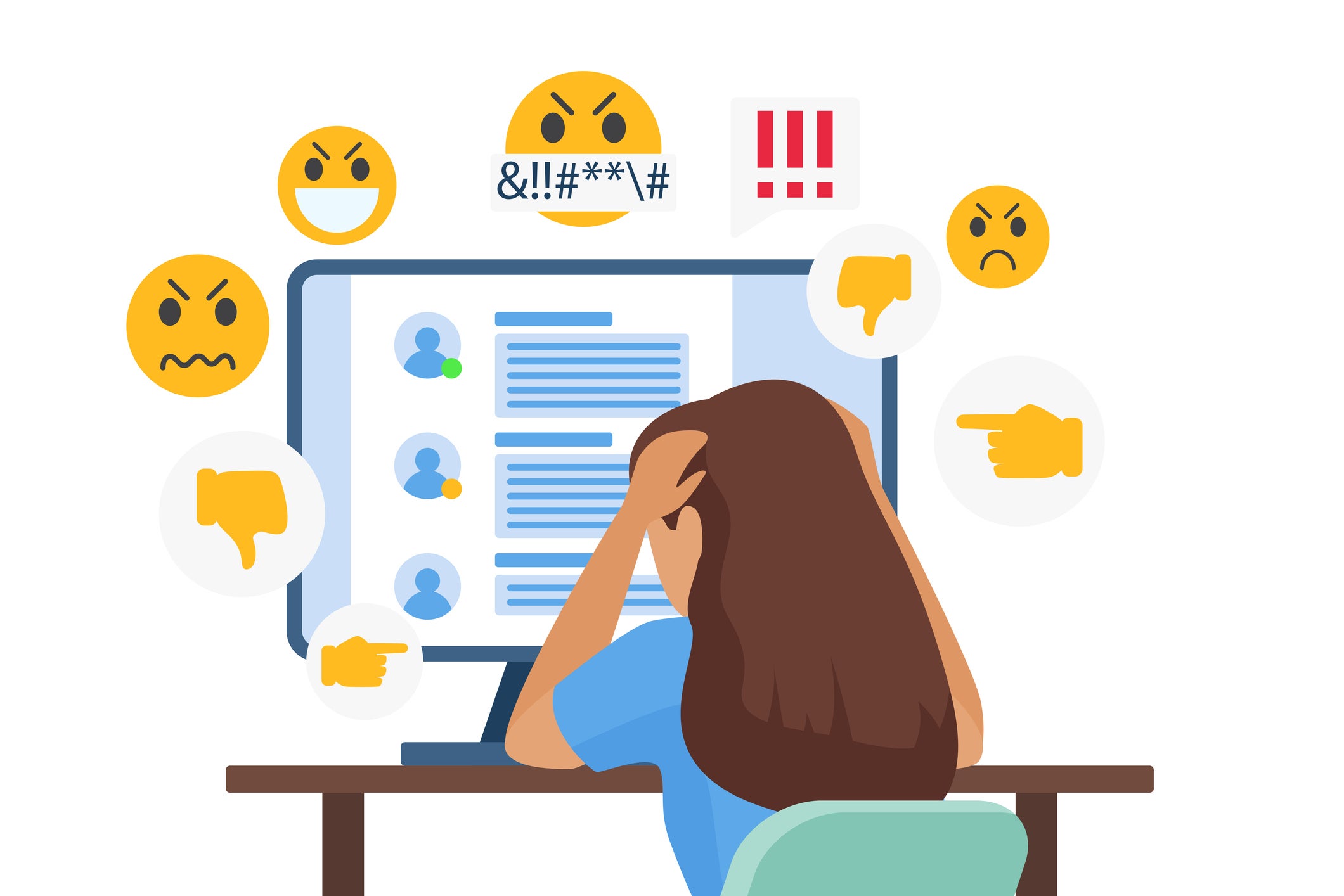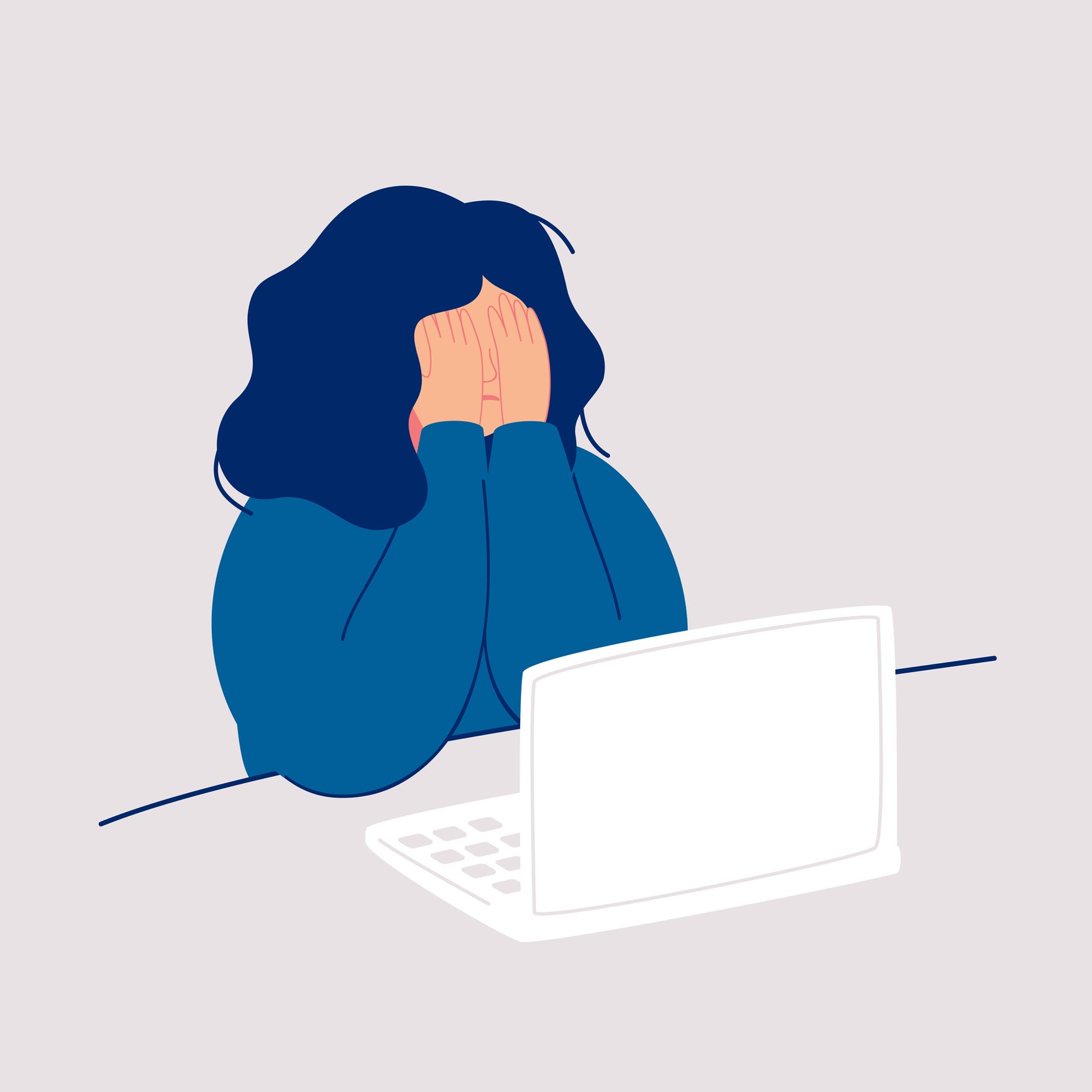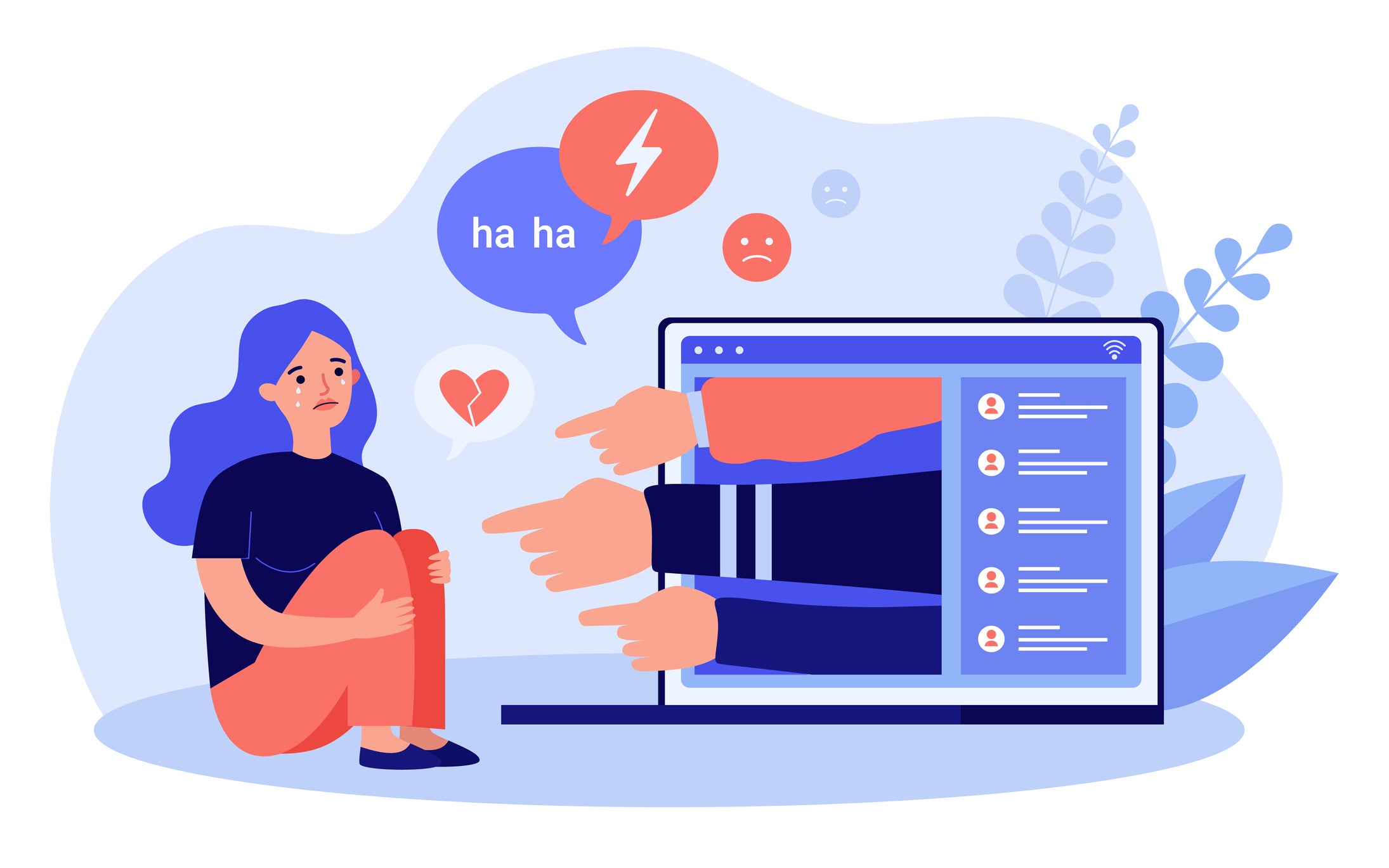How can women protect themselves from online harassment?
We know that online abuse has a very gendered nature to it. Danielle Abril and Hannah Good suggest things women and gender-nonconforming people can do to protect themselves

Your support helps us to tell the story
From reproductive rights to climate change to Big Tech, The Independent is on the ground when the story is developing. Whether it's investigating the financials of Elon Musk's pro-Trump PAC or producing our latest documentary, 'The A Word', which shines a light on the American women fighting for reproductive rights, we know how important it is to parse out the facts from the messaging.
At such a critical moment in US history, we need reporters on the ground. Your donation allows us to keep sending journalists to speak to both sides of the story.
The Independent is trusted by Americans across the entire political spectrum. And unlike many other quality news outlets, we choose not to lock Americans out of our reporting and analysis with paywalls. We believe quality journalism should be available to everyone, paid for by those who can afford it.
Your support makes all the difference.When pandemic stay-at-home orders took effect two years ago, internet use rocketed worldwide. Millions of Americans suddenly relied on their phones and computers as lifelines to remote jobs, classes, now-distant family and friends, socially distanced food and grocery deliveries, and a fire hose of news in an effort to understand the novel coronavirus.
As our lives largely moved online, so too did unwelcome harassment. In a 2021 Pew Research Centre poll, Americans reported more severe encounters, such as physical threats, stalking, sustained harassment and sexual harassment, compared with pre-pandemic levels. Women, people of colour and LGBT+ people are at particular risk of more extreme forms of online abuse, including sexual harassment, stalking and hate speech, according to the Pew poll and a report by Glaad, a gay rights organisation.
“We know that online abuse has a very gendered nature to it,” Seyi Akiwowo, the founder and executive director of Glitch, a UK non-profit organisation working to end online abuse, told The Washington Post last year. “We need language that addresses that.”
While advocates have called for tech companies to do more to curb online abuse and protect vulnerable users, there are things women and gender-nonconforming people can do to safeguard themselves.
Here are some expert tips for identifying your online risk, maintaining online boundaries, responding to threats and more.
1. Ensure you have good digital hygiene
It’s especially important that women take measures to protect themselves from potential online attacks, experts who study online abuse say. The most basic of these proactive measures is good digital hygiene – in other words, making it difficult for hackers to get into your online accounts.
“It’s important to know it can happen to anyone,” says Viktorya Vilk, programme director of digital safety and free expression at the non-profit PEN America. “Future you will thank current you for whatever you can do proactively.”
It may seem strange, but it can be helpful to think about how you would troll yourself, experts say. That means discovering what information about you is publicly available
The first step is simple: use complex and unique passwords for every online account. It’s much easier to recover one compromised account than it is to have to address several simultaneously.
One of the easiest ways to keep track of your passwords is by using a password manager app. April Glaser, a fellow at Harvard University’s Shorenstein Centre on Media, Politics and Public Policy, recommends 1Password and LastPass, both of which have free and premium versions. Each service generates unique passwords to secure accounts.
You should also check your privacy settings and enable two-factor authentication on every service that allows it. This requires users to have two ways of proving that they are indeed the owner of the accounts they’re attempting to access. For example, a user might need both a password and a one-time code sent via text message to log in using two-factor authentication.
These measures may seem simple, but pre-emptive damage control is critical, says Eva Galperin, director of cybersecurity for the Electronic Frontier Foundation, a digital rights non-profit group.
“It’s best to do this in advance,” she says. “When you’re getting harassed, it’s a stressful time in which to batten down the hatches.”
2. Research yourself

It may seem strange, but it can be helpful to think about how you would troll yourself, experts say. That means discovering what information about you is publicly available. Google yourself, your phone number and your address to see what pops up. Is there personal information tied to you? Is it in places from where you can request its removal?
“Think like someone who’s trying to dox you,” Vilk says, referring to the practice of publishing a person’s real name, home address or other private information with the intention of inconveniencing, frightening or endangering them.
An easy way to track what new information may be surfacing about you online is to set up Google Alerts, Vilk says. The service notifies users via email every time Google’s web crawlers find new results mentioning specific words. In this case, you would want to set the keywords as your name.
But you may find your information is in places you wouldn’t expect. Data brokers scrape heaps of information from other sites to sell. Tracy Chou, founder and chief executive of the anti-harassment app Block Party, suggests services like DeleteMe, which costs $229 (£175) a year and will regularly check data broker sites and delete the information they have on you. Kanary performs a similar service for $89.99 (£69) a year.
You can do it yourself for free, although it will take you a lot more time, Glaser says. She recommends manually searching each data broker site and making individual requests for removal. Vilk suggests you do it at least once a year, as data brokers often repopulate their databases even after you’ve deleted your information.
3. Be cognisant about what you post
Experts agree that if you’re going to build an online presence, the best way to do it is by being authentic. But that doesn’t mean posting everything about yourself for the public to see.
“Be really thoughtful what platform you’re using for what purpose,” Vilk says. “If you use Twitter almost exclusively professionally, you can have your Twitter settings more public. But then ... don’t publish private personal information.”

Double check what you’ve put on your social media profiles and personal websites, as well as which of those details are public. And if you’re posting pictures, be aware of what’s in the background. Is your address visible? Are you tagging your location? Is this a regular place where you can be found?
Glaser also suggests that you may want to consider whether you identify who’s related to you on your social media accounts and posts. Facebook, for example, allows you to include family members and spouses in the “About Me” section of your profile. But linking people to you also gives trolls other people to target as a way of harassing you. The same is true if you choose to post or tag loved ones in public photos on social media.
“Your sister or your brother might get harassed, and that’s certainly not what you want,” Glaser says.
4. Protect your mental health
If you find yourself the target of harassment, it’s easy to panic. But experts advise victims to remember they have ways to fight back. And much of that includes steps to protect yourself from the mental harms of online abuse.
“Feeling like you have some agency can be really empowering,” Chou says. “You can assert power where you have it.”
Take advantage of all the tools social media services offer. Mute, block or filter users and threads attacking you. Use reporting tools to flag abusive comments or posts to the relevant companies.
Third-party apps and services can also help. Chou’s Block Party allows users to choose which groups of people they want to get notifications from; notifications from all other users go to a separate folder for later review. And Tall Poppy helps companies protect their employees from online harassment with safeguards, incident response and follow-up support.
To ensure your safety, experts suggest keeping a record of online harassment, which could be used by tech companies or even police to investigate threats
If you’re getting attacked via email, use email filters to reroute harassing messages to a separate folder, Glaser suggests. Specifically, you can set filters for emails containing misogynistic, homophobic or derogatory words.
“You know what words you get the most,” she says. “If anyone is sending me an email like that, it’s not going to be useful.”
But you may not want to ignore abusive messages entirely, experts say. Some may include threats of physical harm or imminent danger. So how do you protect your mental health without having to read everything? Galperin suggests asking someone you trust to read through harassing messages and/or posts.
“Some are quite terrifying and obsessive and may be a sign of escalating harassment,” she says. “You need someone to be reading all of those things for you.”
Galperin also suggests that online support groups like HeartMob can be a good resource for women experiencing online harassment. The group helps provide resources and connects victims of online abuse to a community for mental health support. Therapy can also help ease the stress and emotions that result from online abuse.
5. Take physical action
In some cases, the harassment may require physical action.
To ensure your safety, experts suggest keeping a record of online harassment, which could be used by tech companies or even police to investigate threats. You may need to alert authorities, relatives or your employer, depending on the threat as well as your personal circumstances and comfort level. Experts also suggest having a plan for safe relocation should you need it.
But regardless of the situation, Vilk says, victims under attack should take a moment to breathe, figure out what best suits them, and reach out for support.
“Make sure you don’t go it alone,” she says. “Don’t be afraid to ask for help.”
© The Washington Post




Join our commenting forum
Join thought-provoking conversations, follow other Independent readers and see their replies
Comments